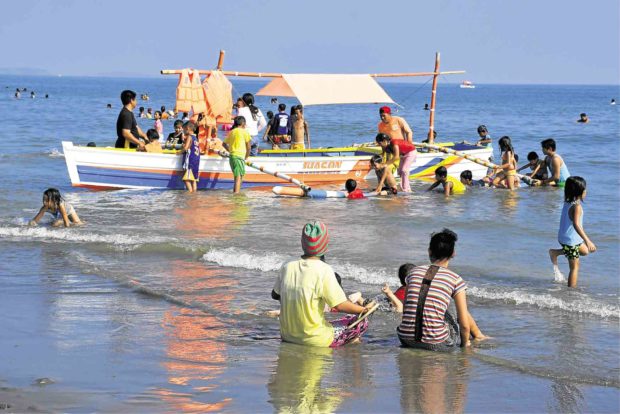Box jellyfish: Scientists warn of soft-bodied killers in shallow waters

Vacationers are drawn to Lingayen beach every weekend, but threats lurk in the waters like the deadly box jellyfish. WILLIE LOMIBAO
LINGAYEN, Pangasinan — The country has an abundant population of box jellyfish, those extremely dangerous creatures that can kill a child within minutes.
A box jellyfish is 10,000 times more dangerous than a common jellyfish, said Angel Yanagihara, associate research professor of the Department of Tropical Medicine at the University of Hawaii in Manoa, adding that just a few inches of tentacle contact could kill a child.
Box jellyfish are cube-shaped creatures, with one to 15 tentacles in every corner. The common jellyfish is usually round with tentacles hanging around its circumference.
There are documented box jellyfish stings in the country, with cases reported in the Lingayen Gulf in Pangasinan province, Yanagihara told disaster response officials from coastal towns and cities on Tuesday.
Efficient killer
Living primarily in shallow waters less than 5 meters deep in mangrove creeks, coastal beaches and river mouths, box jellyfish usually abound during the hot months of April and May, said Judith de Guzman, a lifeguard at the public beach in San Fabian town.
“But they can be present all year round. That’s why it is important to be aware all the time,” Yanagihara said.
She said 50 to 100 people die from box jellyfish stings every year, with more than half of them children.
De Guzman said the provincial disaster risk reduction and management office had trained lifeguards on addressing jellyfish stings.
Box jellyfish tentacles have multiple hypodermic needle-like structures, which can trigger paralysis, according to the University of the Philippines Marine Science Institute (UPMSI) based in Bolinao town.
As first aid, lifeguards usually pour vinegar on the infected areas. Removing the remaining tentacles carefully and immersing the affected areas in hot water for 45 minutes will also deactivate the venom, the UPMSI said. —Gabriel Cardinoza